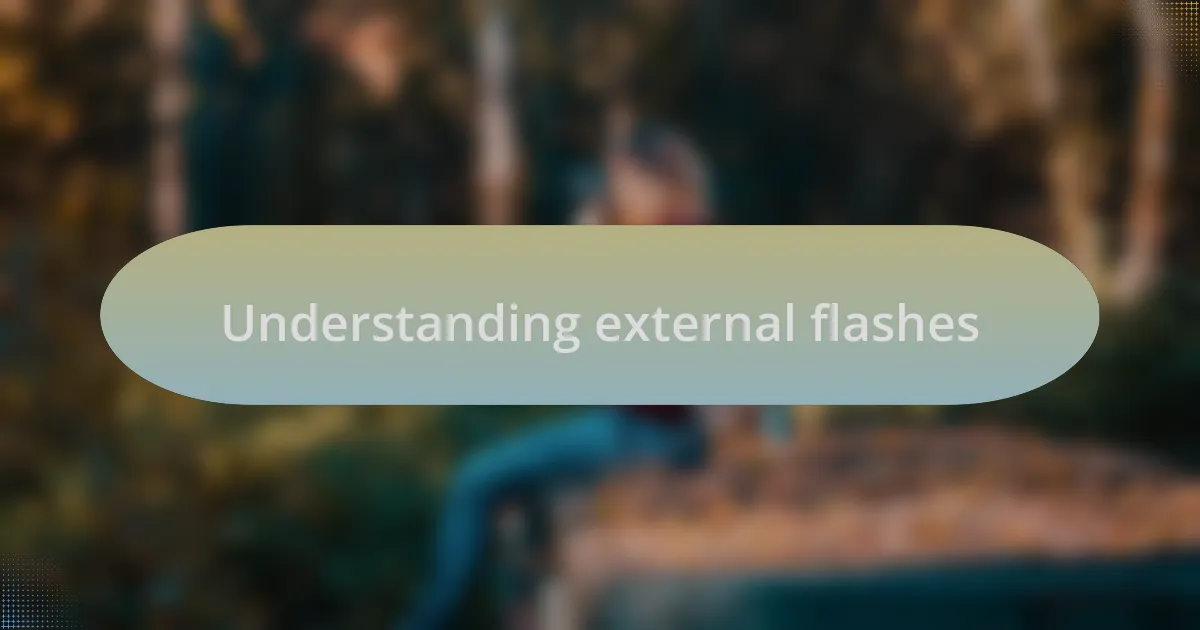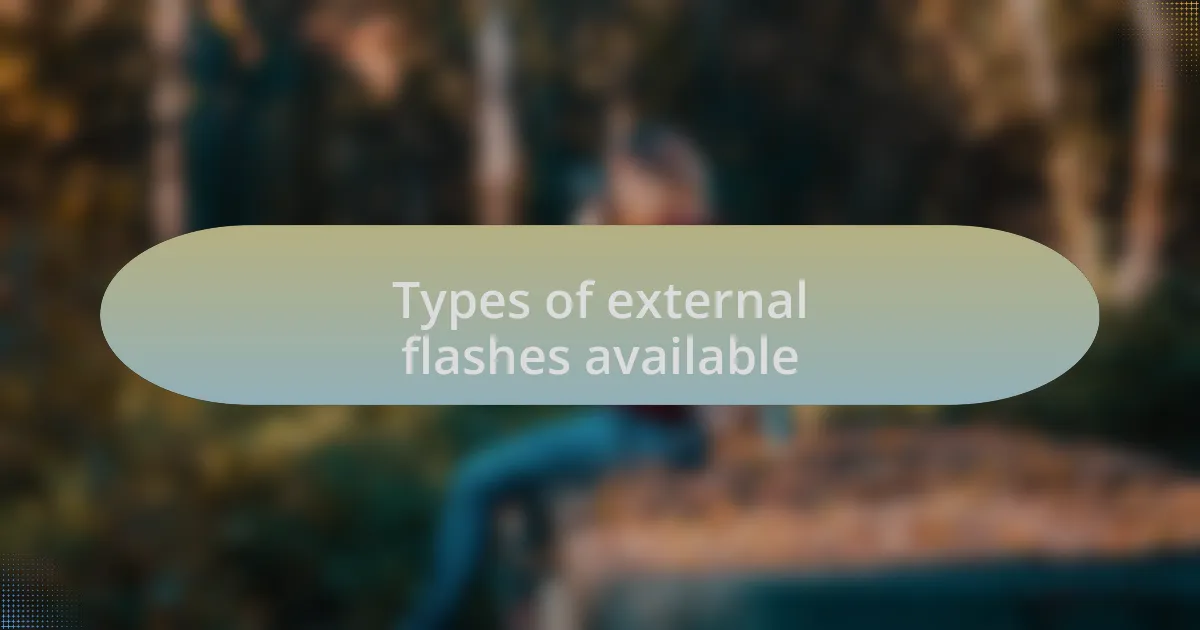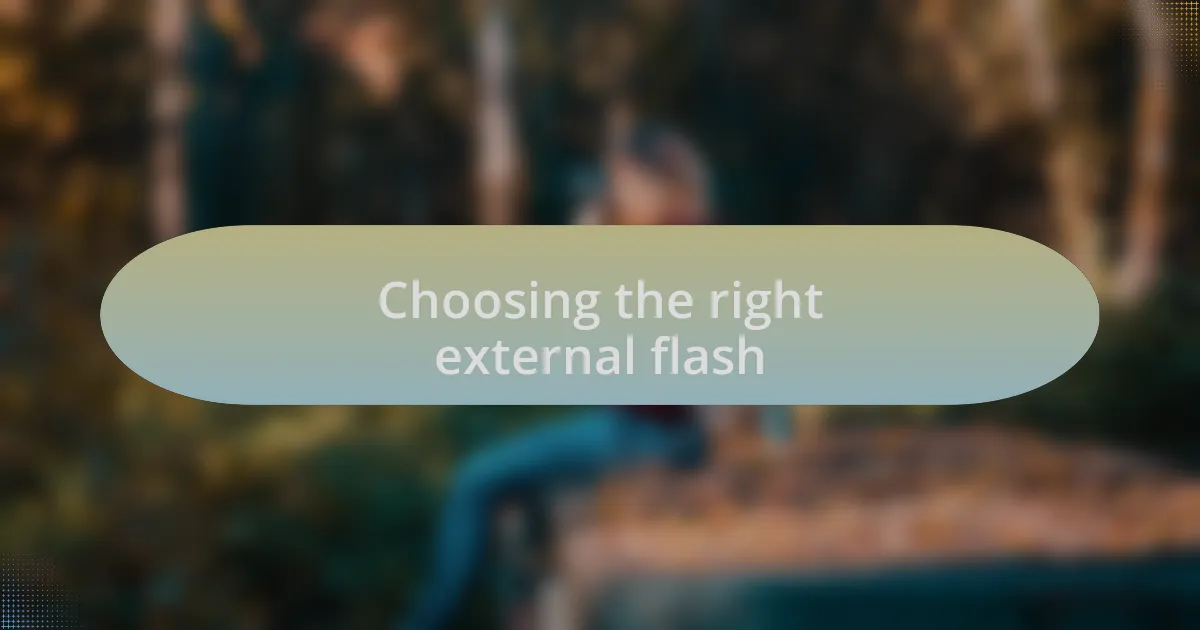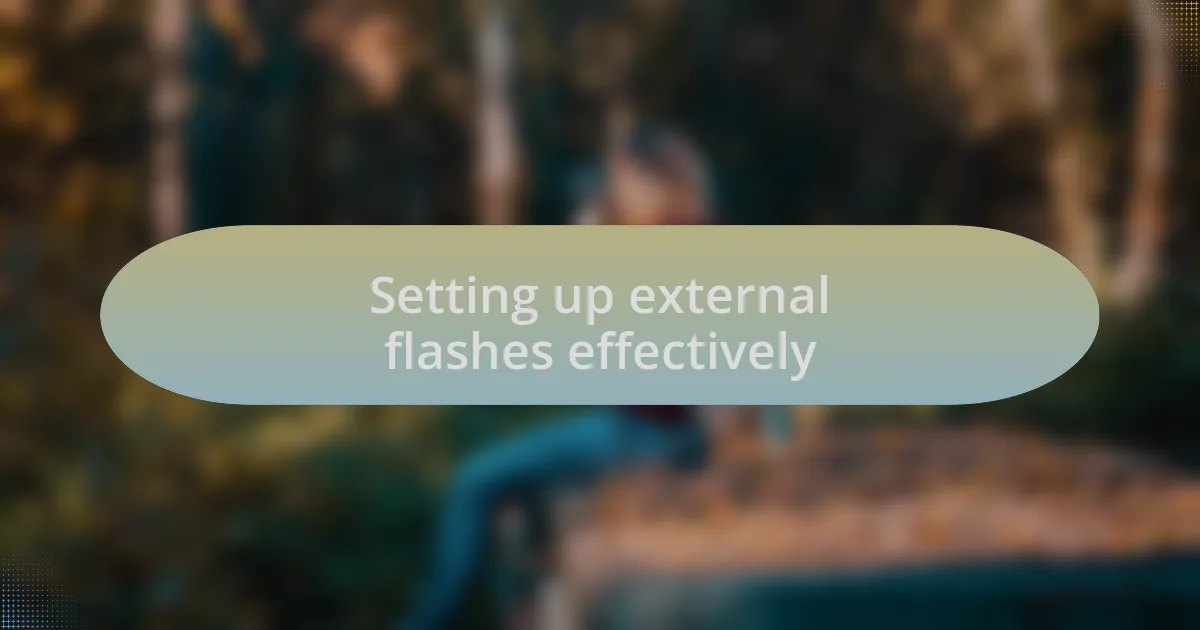Key takeaways:
- External flashes can significantly enhance photography by improving lighting and revealing details that may be missed by the naked eye.
- There are three main types of external flashes: speedlights (portable and versatile), studio strobes (powerful for controlled environments), and ring lights (ideal for close-up beauty shots).
- Choosing the right external flash should align with your photography style, considering factors such as power, portability, and features like TTL metering.
- Effective setup involves understanding flash positioning, adjusting settings for desired output, and experimenting with modifiers to achieve the best lighting results.

Understanding external flashes
When I first encountered external flashes, I was taken aback by their impact on my photography. It’s fascinating how these devices can transform a scene, bringing out details that the naked eye might miss. Have you ever noticed how a photo can shift from flat to dynamic with the right lighting?
Understanding the different types of external flashes is crucial for maximizing their potential. For instance, I remember using a bounce flash for the first time during an indoor event; the light diffused beautifully, creating a warm ambiance that added depth to my shots. Isn’t it amazing how light can completely alter the mood of an image?
One key aspect to consider is the flash’s guide number, which measures its power. I once overlooked this detail, and it led to a series of underexposed photos at a wedding. Since then, I’ve learned to pay close attention to this specification—it truly makes a difference in achieving the perfect exposure. What experiences have you had with getting the exposure just right?

Types of external flashes available
When I started exploring external flashes, I quickly found that there are primarily three types: speedlights, studio strobes, and ring lights. Speedlights, also known as flashguns, are incredibly versatile and portable. I remember taking mine on a road trip, using it to capture stunning sunset portraits with just the right amount of fill light.
Studio strobes are another category, typically used in more controlled environments like studios. I’ll never forget my first time using a strobe for a fashion shoot; the output was powerful and crisp, creating images that popped off the screen. The ability to adjust the light’s intensity really helped me refine my artistic vision.
Then there are ring lights, which offer a distinct, circular illumination that’s perfect for close-up shots, especially in beauty photography. I once used a ring light for a series of headshots, and the results were simply stunning, with even lighting and a gorgeous catchlight in the eyes. Have you explored the unique styles that each type of flash can bring to your creative work?

Choosing the right external flash
When it comes to choosing the right external flash, I always advise considering your photography style first. For example, while speedlights are fantastic for quick, on-the-go shoots, I’ve found that studio strobes can truly elevate a carefully planned session. Just think about the creative possibilities—what type of flash aligns best with your vision?
Balancing power and portability can also influence your decision. I remember wrestling with my gear at a wedding, swapping between a speedlight for candid moments and a bigger strobe for more formal portraits. This experience taught me that having the right flash can be a game-changer in capturing those fleeting yet special moments. Have you ever faced a scenario where the wrong flash choice impacted your shoot?
Finally, don’t underestimate the impact of features like TTL (Through The Lens) metering. This was a revelation for me during a low-light event—my speedlight’s TTL capability allowed me to adapt dynamically to changing lighting conditions without fumbling with settings. When you think about your future shoots, which features do you envision needing the most?

Setting up external flashes effectively
Setting up an external flash effectively begins with understanding its positioning. I remember my first-time using an off-camera flash; I was eager to experiment but quickly learned the importance of angling it just right. I found that placing the flash at a 45-degree angle not only added depth to my shots but also helped in reducing harsh shadows. Have you ever noticed how a slight shift in positioning can transform an image?
Another crucial aspect is mastering the settings. When I was preparing for a night shoot, I took some time to familiarize myself with the flash’s output levels. It was enlightening to see how adjusting the power output could significantly change the warmth and intensity of my images. How often do you find yourself tweaking settings on the fly during a shoot?
Lastly, always remember to experiment with your flash’s modifiers. I used a softbox during a portrait session, and the difference was astonishing. Suddenly, the light was softer and more flattering, which made my subject sparkle. Have you explored using different modifiers, and how have they influenced your photography outcomes?